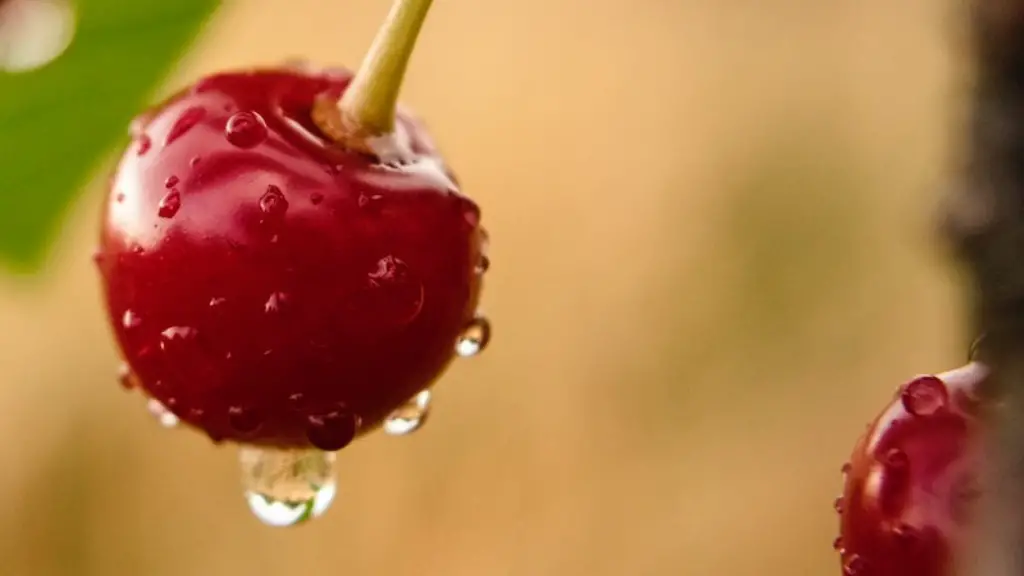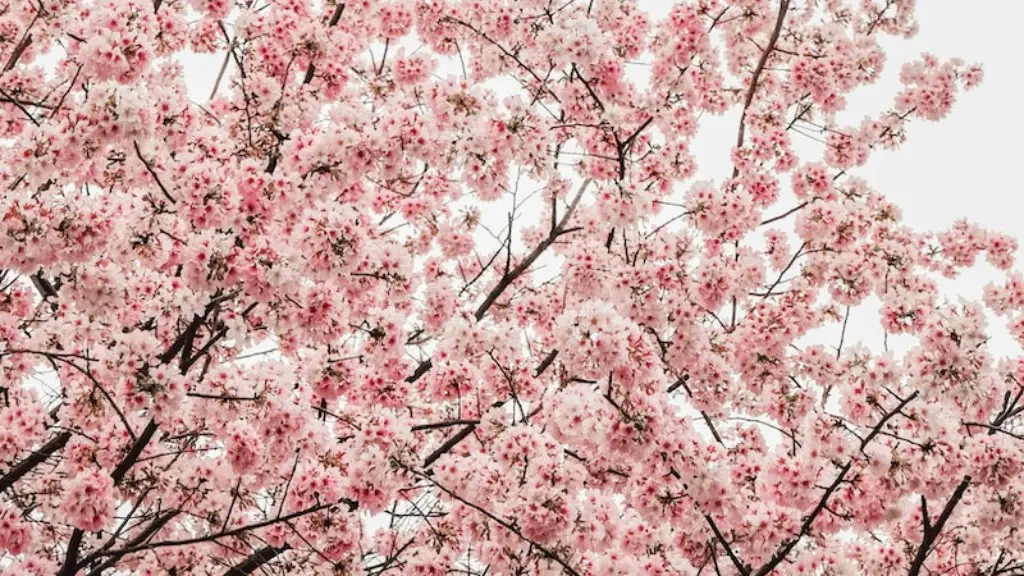Step 1: Determine Where the Tree Is Needed
When choosing a cherry tree, one of the most important things to consider is where the tree will be planted. This not only has implications for the type of tree, but also for the tree’s growing requirements. If the tree is to be planted in a sunny, well-drained spot, a certain variety of cherry might do best. If the spot is in shade, or if the soil is heavy and wet, then a different variety might do better. It’s important to know the difference in the types of trees and which type of spot to plant in for best growing conditions.
Climate is another factor to consider when choosing a cherry tree. Will the area get cold during winter? Does the tree need to be located near other trees to provide shelter? Are there other conditions specific to this area that need to be taken into account? Proper research and consultation with knowledgeable local sources will help to ensure the right tree is chosen for the right location.
Step 2: Understand the Different Varieties of Cherry Trees
Once the location has been determined, the next step is to select the right variety of cherry tree. There are many different varieties, including sweet, tart, and ornamental varieties. Sweet cherry trees produce delicious, tart fruits, while tart cherries produce less sweet fruits. Ornamental cherry trees are often planted for their beautiful spring blossoms and fall foliage, rather than for their edible fruits.
In terms of size, cherry trees can vary from dwarf varieties that reach just a few feet tall, to larger varieties that can reach heights of up to 20 feet. Weighing these various considerations is key to selecting the right variety of cherry tree.
Step 3: Consider Other Growing Requirements
Cherry trees can be sensitive to some environmental problems and need to be provided with certain growing conditions to thrive. Some varieties need good soil drainage and lots of sun; other varieties may need cooler temperatures and certain soil conditions. Cherry trees also require adequate airflow and ventilation to prevent disease, which can be especially important in the summer.
Taking the time to understand soil, water, temperature, and ventilation needs can help ensure the cherry tree is planted in the right conditions.
Step 4: Select the Right Time of Year to Plant
Weather conditions must also be considered when planting a cherry tree. Planting a cherry tree too soon can cause it to suffer greatly when winter comes, whereas planting too late can mean missing out on the much-needed nutrients it can get from the warmer soil. Generally, cherry trees should be planted in the spring, when temperatures are mild and the soil is warm.
Step 5:Get to Know the Tree
Once the cherry tree is planted, it is important to monitor its progress and get to know the tree. Newly planted trees should be checked regularly to ensure they are being cared for properly, and they should be checked for any signs of disease or pests.
Additionally, regular pruning and shaping of the tree’s branches and roots can help to maintain the tree’s health and help maximize its harvest. Pruning can also help to extend the life of the cherry tree, enabling it to produce delicious cherries for years to come.
Step 6: Ensure Proper Care and Maintenance
Once all of the above steps have been followed, it’s important to make sure the cherry tree is properly cared for and maintained. This means making sure the tree is watered and fertilized appropriately, as well as being pruned and shaped regularly.
In addition to these tasks, it’s a good idea to inspect the tree regularly to ensure it is healthy and safe from disease. If a problem is discovered, it’s important to research the issue and take steps to address it as soon as possible to prevent any permanent damage.
Additional Steps
Step 7: Pest and Disease Control
Cherry trees can be susceptible to a variety of pests and diseases, including blight, aphids, and Japanese beetles. It’s important to inspect the tree regularly for signs of any of these pests or diseases, and to take appropriate measures to control them. This could include using insecticides, fungicides, or other treatments.
Step 8: Harvesting
When the time comes to harvest the cherries, it’s important to know when the right time to pick them is. Knowing when the fruit is ripe is key to maximizing the harvest, as cherries that are picked too soon can taste sour, while those that are picked too late could be overripe.
It’s also important to ensure the cherries are picked carefully and with minimal damage, to maintain the highest quality of fruit.
Step 9: Storage and Preservation
Once the cherries have been harvested, it is important to store and preserve them properly. Cherries are best when consumed soon after being picked, but with proper storage, they can last for a few days. Refrigeration is the best way to keep cherries fresh, and it’s important to make sure they are stored in a cool, dry place.
In terms of preserving the cherries for longer periods of time, freezing or canning is another option. Freezing cherries is a relatively simple process that can keep the fruit fresh for up to a year. Canning is a more advanced method which requires the use of a pressure canner and adds additional shelf life of up to 5 years.
Step 10: Enjoy the Results
The last step is perhaps the most important one: enjoy the sweet results of your effort! Choose a delicious recipe and prepare a dish with your freshly-picked cherries.
Plus, when you’ve taken the effort to carefully select the right variety of cherry tree and provide it with the right conditions and care, you can take immense pride in the results. The sweet taste of the cherry fruit is a reward in itself!


